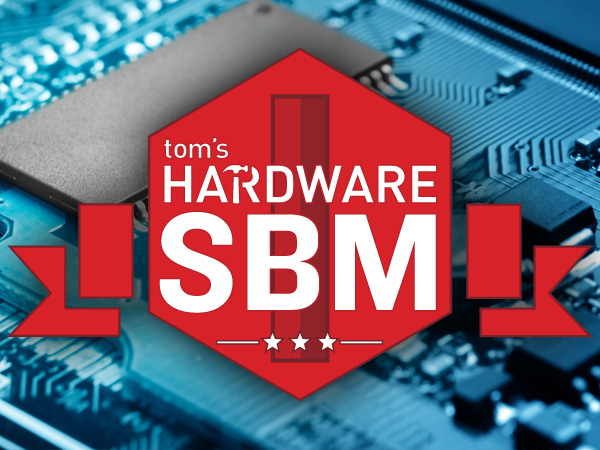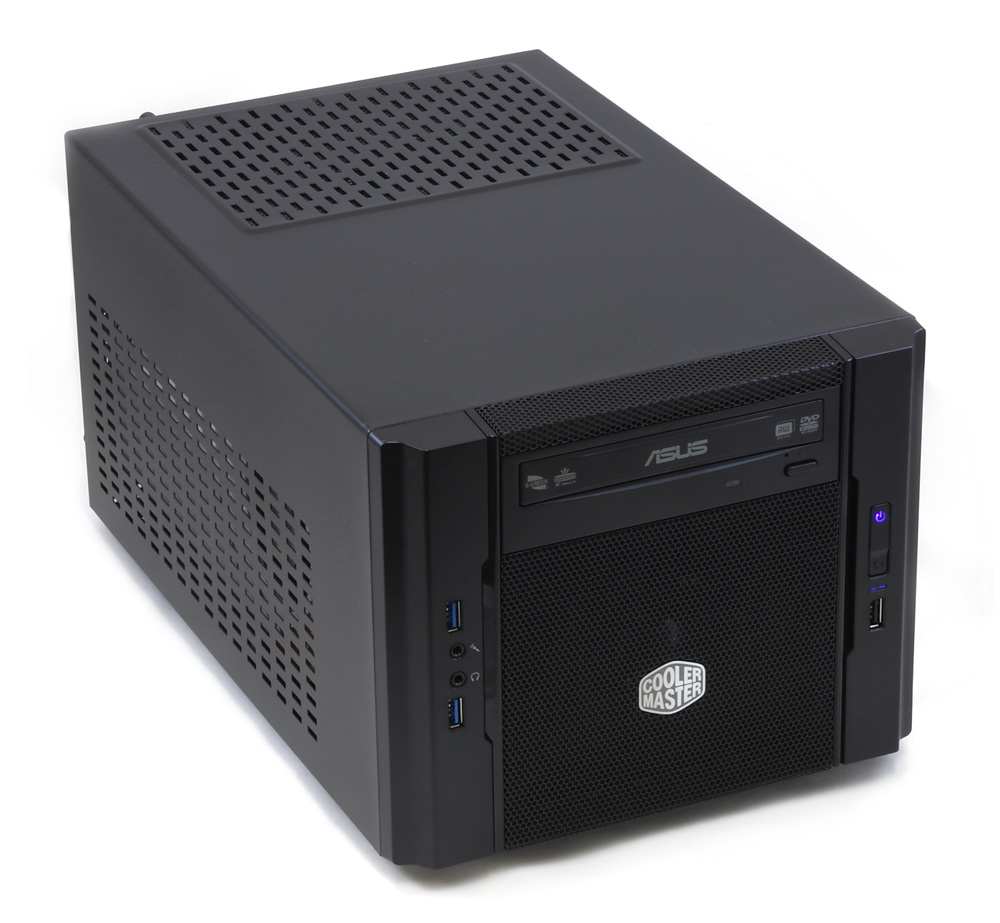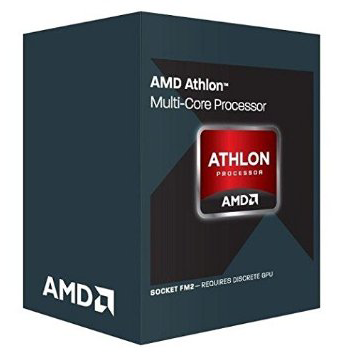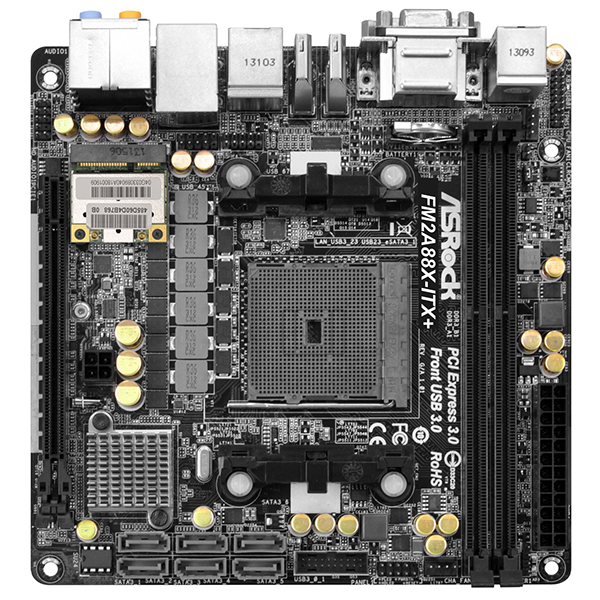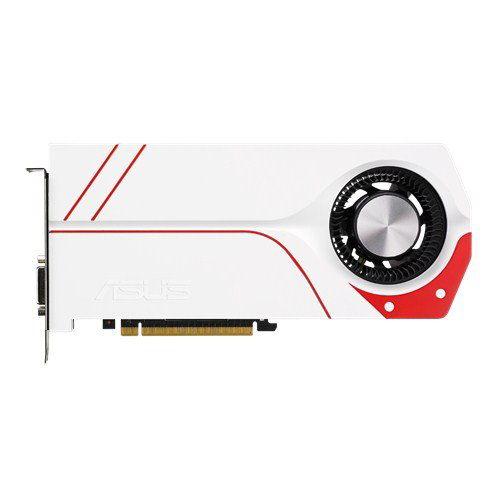System Builder Marathon Q3 2015: AMD Mini PC
This quarter we're building three equally priced PCs, with no theme restrictions! First up is an AMD-based Mini PC for LAN parties dubbed the "Munchkin."
Introduction
System Builder Marathon Q3 2015
Here are links to each of the five articles in this quarter’s System Builder Marathon (we’ll update them as each story is published). And remember, these systems are all being given away at the end of the marathon.
To enter the giveaway, please fill out this SurveyGizmo form, and be sure to read the complete rules before entering!
- $800 AMD Mini PC
- $800 Gaming PC
- $800 Prosumer PC
- System Value Compared
$800 AMD Mini PC
Well, this is a real treat. I only started doing motherboard reviews for Tom's Hardware earlier this year, and now I get to do an SBM build! This feature was always one of my favorites, so I'll try not to let any of the readers down. That said, it's a given that not everyone will agree with the part selection, and I'm sure you'll let me know in the comments. In fact, I know right now many will violently disagree with at least two decisions. Not every part below was my first pick. Time and money constraints dictated some choices for me. So to preemptively cut off arguments before they happen, I'll take a little extra time and space in this article to explain the entire genesis of my SBM offering. Before you lay flame to the comment thread, I ask that you consider the machine in its own right.
The restriction this quarter was $800, including OS, and nothing else. No form-factor constraints, no platform requirements, no general theme. That meant I had about $700 for hardware. I decided to build a LAN box that's easy to take on the go, but with enough power for triple-screen gaming at home. Don't believe you can do that for only $800? Let me introduce you to what I call the Munchkin.
- Platform Cost: $645
- Total Hardware Cost: $707
- Complete System Price: $797
Inception
The invitation to participate in the SBM was a complete surprise to me. Paul was originally slated a build, but had to withdraw due to a packed schedule. The offer came with a strict time limit attached. I had two weeks to shop for parts, get them delivered, photograph the parts, assemble the rig (and photograph that process too), bench it, overclock it, bench it again and write up this article. As the kids say: "Challenge accepted."
Option Overload
I hit a wall immediately after starting: option overload. As most artists and creators will tell you, a blank canvas is one of the most intimidating things to confront. You have endless options and deciding on a direction can be difficult. Left to my own devices, I would have built a nice general purpose system that's "good enough" for both light professional work and serious gaming, just like my personal rig I use every day. But we already know how an i5 with a GTX 960, R9 280X, or GTX 970 performs. The SBM is a great time to explore alternative build ideas to get some more interesting data points. I needed at least one constraint to start organizing my thoughts and make this interesting. A quick email revealed Paul was planning an ITX build. That was the start I needed.
Get Tom's Hardware's best news and in-depth reviews, straight to your inbox.
Form Factor Locked In
Tom's Hardware has featured many ITX builds over the years, so I didn't want to make a repeat. Thomas and Julio both built ITX rigs last quarter, but had twice as much money in doing so. Two years ago the entire Marathon was about ITX, but we're well past Ivy Bridge, Kepler and Tahiti (ok, well, first-generation Tahiti). So I was in the clear; I wasn't going to duplicate anything too closely.
If I was going ITX, I wanted it to be small. BitFenix and Rosewill make good cases, but a Prodigy and Neutron are both the size of a mini tower case. I don't see the point of an ITX build in something that big when (usually) cheaper microATX parts can do the same. I wasn't shooting for tiny cable-box size, but I definitely wanted it about the size of a big shoebox (around 1500 cubic inches or 24.6 liters).
Plan A
My motherboard partner-in-crime Joe Trott advised me to pick a system theme. What was it intended to do? My first thought was to make a professional system with "gaming on the side." A $250 Xeon 1231v3 would take a big chunk of my budget, but it was doable. Unless someone fit an i7 into their build, I knew a Xeon would probably win the benchmark section of the competition, even though it's a locked processor. Fitting the rest of the components in was difficult. For me to call it a professional system, I wanted 16GB of RAM. I also wanted both a large SSD and at least 1TB of spindle storage. After all this, I had about $50 left over for a graphics card. I could squeeze in an R5 240 or GT 730 if I cut back on the motherboard, but I was hoping for something a little more robust.
The Path Less Traveled
I had "Plan A" mostly done, but I wanted to explore other options as well. What if I approached this from the other side? I could get the strongest GPU I could find and make a gaming machine. Paul has built plenty of gaming-first machines in the low-budget space, so how was I going to differentiate this one? Many users in the forums have been asking for an FM2+ ITX build for a while, and specifically wanted to know how an Athlon 860K would do. This idea isn't terribly popular since the CPU puts out more heat than a similarly priced Intel CPU. Still, the SBM is supposed to be about experimenting. The idea of pairing an 860K with a high-end GPU is simply too delicious to not explore. Mr. Trott said the idea was risky but interesting.
Something to Prove
I'm treating this SBM as an experiment of sorts. That means I have some questions that I want answered. The first is whether an 860K is a viable ITX platform on stock cooling. I can hear you already: "Stock AMD cooling? Are you crazy?" Well, that wouldn't be the first time I've been accused of that, but yes, I'm sticking with stock cooling. At time of purchase, the 860K was $75 USD. An i3-4160 (or 4170) is $125. That means you only have $50 to spend on cooling before you're spending more money on a weaker chip. Really, if you spend $40 on cooling you'd be better trimming $10 from your build elsewhere and switching to the i3. So stock cooling it is.
The second question is just how far back an 860K will hold a premium GPU. The idea of cheaper CPUs bottlenecking premium GPUs in games is hotly debated in the forums. I'm not going to say a budget CPU doesn't hold a GPU back, I simply want to quantify how large the bottlenecks is. Does it mean games are unplayable? Does it mean they're stuttering a little and are just on the wrong side of smooth framerates? Or does it mean you only maintain 70fps instead of 80fps? I'm inclined to believe this setup will take about 10fps off the top end from what you'd expect with a stronger CPU, but that everything will still be very playable at higher detail settings. Let's see if I'm wrong.
This is going to be a min/max system past the point of sanity (possibly). It's going to be a munchkin not only in stature, but intent as well. I will likely crash and burn on this endeavor, but I'm going to do it in style.
-
ykki All the talk about the ''path less travelled" and you still couldn't ditch the optical drive (in favor of a better psu).Reply
Aside from that its nice to see an AMD platform in ITX. -
chimera201 This is what I wanted. Comparing different systems at the same price. And 800$ is a good pick for the price. But what I actually want to see is a comparison ofReply
Intel CPU & Nvidia GPU system
Intel CPU & AMD GPU system
AMD CPU & Nvidia GPU system
AMD CPU & AMD GPU system
at the same price at the same time
-
Flying-Q ReplyAll the talk about the ''path less travelled" and you still couldn't ditch the optical drive (in favor of a better psu).
The ODD wasn't Eric's choice, it was an editorial requirement.
Aside from that its nice to see an AMD platform in ITX.
From the article
My first submitted part list didn't include an optical drive and my chosen GPU had a $20 instant rebate. This allowed me to fit a 240 GB SSD and SeaSonic modular power supply. Management told me I had to include an optical drive. My case didn't have a 5.25" bay, meaning I'd have to get a more expensive external drive or a different case.
Speaking of which, it is about time 'management' recognise that ODDs are no longer mandatory. I built a machine 5 years ago with an ODD and have used it only 3 times in those 5 years, and those occasions only because I couldn't be bothered to go downstairs to get my keys with their attached USB stick. On one of those occasions I had to take an external ODD with me as my friend didn't have any ODD of his own!
Aside from all that, Eric, this is a really great SBM experiment and your writing style is a pleasure to read. Thank you. -
alidan is there any way to move to videos/audio that you make 100% yourself, so that we can run our current systems through the same tests? i'm assuming there are a number of people here who would live to bench their system against these to see what an upgrade would cost them.Reply
also, on the optical drive front, i see no reason not to include one.
if you want to talk music, depending on the band, its cheaper to buy used cd's than it is to buy the songs individually, and its far cheaper to buy a used dvd/bluray than to even rent a movie or tv series, some exceptions can be made if you have netflix dvd/bluray delivery, but even than, a 4 disc or 6 disc season would cost you something like 5-8$ to rent and likely the same to buy and have it shipped for free.
personally, i have a bluray burner that i use quite a bit, and i have a dvd drive that till it broke was almost constantly used... its hooked up to an IDE cable, and the last time i messed with one of those the computer wouldn't go passed the bios anymore... so i dont take it out just because i dont want my computer to screw up in a way i dont know how to fix...
lets also say you want to legitimately buy games, you can get in box on the pc games for cheaper than digital most of the time, and when a game goes on sale digitally, you can get them used on the pc for cheaper, though you probably won't line up with the eula if you go that route.
i would at the very least love to see a drive bay case in all builds like this, but the drive itself does not need to be there, a decent compromise or in the case of you absolutely do not want to have an internal drive space, than make an annotated price that shows what it would cost to hook one up... i believe an external sata ide interface is able to run dvd/bluray drives along with hdds (i had to get one when 2 of my external drive cases failed on me, cheaper getting one 20$ thing opposed to 2 cases, one for each interface. -
RedJaron Reply
As I said, regularly I disagree with the "no ODD" crowd. You're right in that they're not always a hard requirement. However I've had enough requirements for them in the last three years that I'll still include one in my personal builds. But, also as I said in the article, I always have a flexible budget where adding an extra $20 isn't out of the question.16691054 said:Speaking of which, it is about time 'management' recognise that ODDs are no longer mandatory. I built a machine 5 years ago with an ODD and have used it only 3 times in those 5 years, and those occasions only because I couldn't be bothered to go downstairs to get my keys with their attached USB stick. On one of those occasions I had to take an external ODD with me as my friend didn't have any ODD of his own!
In terms of the first version of the Munchkin, I asked management if I could just include a regular internal drive ( even though the case couldn't fit it ), and just say the user would have to use it from the bench before the case was closed up. They wouldn't go for it. ;)
Thank you. I know I tend to get a bit verbose, but I wanted this to be kind of like a narrative.16691054 said:Aside from all that, Eric, this is a really great SBM experiment and your writing style is a pleasure to read. Thank you.
-
RedJaron Reply
This was kinda my idea when Joe and I designed the bench suite used for the $60 mboards. Everything used there was free and freely available so everyone else could run the same thing to compare their system. Joe has modified it for his uses as he has basically come to own that review segment.16691160 said:is there any way to move to videos/audio that you make 100% yourself, so that we can run our current systems through the same tests? i'm assuming there are a number of people here who would live to bench their system against these to see what an upgrade would cost them.
The problem with it is that it's largely made up of synthetics. Synthetic benches are great for hardware testing because they can be more strenuous and use every new feature and instruction set. That means they can show off strengths and weaknesses better.
However, for the SBM we also want to use real-world software to get real-world-applicable results. That means we use things like MS Office, Adobe Creative Cloud, iTunes, and code compilers. You could run the same tests on your machine, but you'd have to have the exact same software as well as the same project files and such. I don't think it's some super Tom's Hardware secret exactly what we use, we just don't want to host a 200 GB image that contains the files and instructions how to use it.
As I said, for myself I usually use an ODD. However, I will recognize that not everyone wants or needs one. If you're fortunate to have a good internet connection, downloading games and software isn't a problem. Someone who lives in the boonies and doesn't have a fat pipe, or that has a metered connection, doesn't want to deal with 20GB downloads. With the Munchkin as a LAN box, I didn't think an ODD was necessary. Ten years ago when I was going to LANs more regularly, sharing a game disc to get everyone a copy so we could all play it was common. If you go to a LAN party now, most files will be shared over network or via USB stick.16691160 said:also, on the optical drive front, i see no reason not to include one.
if you want to talk music, depending on the band, its cheaper to buy used cd's than it is to buy the songs individually, and its far cheaper to buy a used dvd/bluray than to even rent a movie or tv series, some exceptions can be made if you have netflix dvd/bluray delivery, but even than, a 4 disc or 6 disc season would cost you something like 5-8$ to rent and likely the same to buy and have it shipped for free.
personally, i have a bluray burner that i use quite a bit, and i have a dvd drive that till it broke was almost constantly used... its hooked up to an IDE cable, and the last time i messed with one of those the computer wouldn't go passed the bios anymore... so i dont take it out just because i dont want my computer to screw up in a way i dont know how to fix...
lets also say you want to legitimately buy games, you can get in box on the pc games for cheaper than digital most of the time, and when a game goes on sale digitally, you can get them used on the pc for cheaper, though you probably won't line up with the eula if you go that route.
i would at the very least love to see a drive bay case in all builds like this, but the drive itself does not need to be there, a decent compromise or in the case of you absolutely do not want to have an internal drive space, than make an annotated price that shows what it would cost to hook one up... i believe an external sata ide interface is able to run dvd/bluray drives along with hdds (i had to get one when 2 of my external drive cases failed on me, cheaper getting one 20$ thing opposed to 2 cases, one for each interface.
I don't agree with the idea that every SBM case must have an external bay. Getting an external USB ODD is easy enough for those cases and machines. An external drive also has the benefit of being portable so you can share it among all your home computers. -
Onus I do feel compelled to comment on the Corsair CX. Personally I would have risked the untested ARC, under the theory that "the orc that one hears (the CX) is worse than the orc that one fears (the ARC)." With that out of the way, this article was a pleasure to read, and the limited comments we made back and forth did not reveal what an outstanding analysis we would all get to read. Whether anyone would build a PC like this or not, the value of the data point it has provided is undeniable. Very well done.Reply -
RedJaron I'm not crazy on the CX either. If this was in a system that was constantly drawing 400W, I'd be a little worried. But the PSU has it's own air intake to keep it cool, and it doesn't go above 60% load so I think it's fine.Reply -
braincruser When you are building a LAN pc, can we have a same priced laptop in there to compare the performance. Many of us use laptops regularly and would like to know where they stand compared to desktops.Reply
